Mobility hasn’t necessarily been my thing in recent years, at least enough to make a significant investment in DAPs that ring in at the Astell&Kern range. After all, these are the Ferraris of the DAP world and I’m kind of a beer-budget audiophile when it comes to mobile. I’ve been fairly satisfied with my iPhone+HeadAmp Pico streaming tunes from Spotify to keep me groovin’ while I’m at the workbench.
My attitude changed when I got a chance to hear fellow Guru Frank Iacone’s AK240. With its Dual-Dacs, native DSD decoder, MQS streaming, and seriously sexy build quality – I immediately started thinking of things I could sell in order to get my hands on one for myself.
Alas, it wasn’t to be. My wife offered some advice: Something something “mortgage payment” something something “college fund” something something “no effing way” …
However, thanks to my visit to Capital Audiofest, I had a chance to meet the A&K crew and hear their latest players: AK100 II and AK120 II. After hearing the AK120, I was very much intrigued. It seemed to me, with regard to Hi Res PCM files, that it was coming uncomfortably close to the AK240 … enough to make me think again about dipping into the cookie jar. I have very few DSD files to warrant a major investment in native playback, so it seemed to me that the AK120 II might be the perfect model for someone like myself – and I think that there are actually a lot of folks in this position, so I asked for a review sample to find out for myself (and for my readers) whether or not the AK120 II walks the walk.
THE MAP IS NOT THE TERRITORY – Alfred Korzybski
As a die hard analog devotee, my digital exploits are limited to my desktop and mobile listening. My big rig is all analog all the time, and no digital playback system that I’ve had in there has survived the battle. I’m able to get just about everything I want on vinyl, including most of the new music I love – EDM, IDM, Rock, Ambient, Experimental … it’s almost all on vinyl. In fact, I’ve got the new Flying Lotus “You’re Dead” and Aphex Twin “Syro” vinyl on the way to me now, and they’ll have happy homes next to my other Flying Lotus, Aphex Twin, Squarepusher, Nosaj Thing, Murcof, etc vinyl. There are some things only available via download, or by download and CD only, this I admit … but when it comes to the music I invest in – downloads aren’t as common for me.
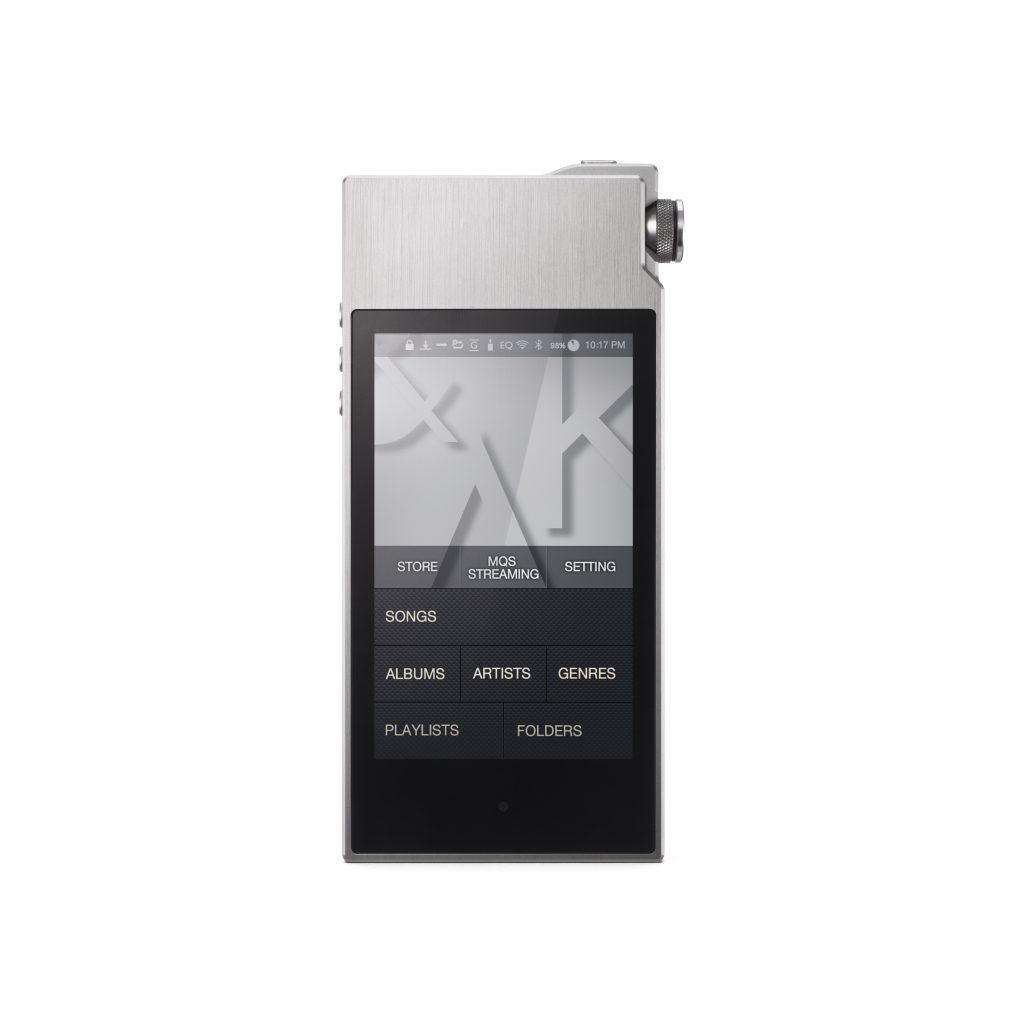
That said, my desktop has been home for almost a decade to lots of CD rips. I was a bleeding-edge early adopter to the USB-DAC thing, buying Gordon Rankin’s very first Cosecant USB DAC off the line. After hearing it at CES (back when it was at the Alexis Park, an infinitely preferable venue, IMHO), I was floored. Shutup and take my money!
Nevertheless, despite the exceedingly impressive specifications and assurances from die-hard recording industry experts and mastering engineers that digital is a superior format – I’ve found that digital experiences in my listening room have been largely disappointing when it comes to the ordinary digital oeuvre. Save for the exceptional output of purist engineers like Todd Garfnkle (MA Recordings), Kavi Alexander (Waterlily Acoustics), Chesky Records, et alia, digital has been a freeze-dried simulacrum of the musical delights that I regularly imbibe from my analog rig, and so I’ve banished digital from the listening room. Indeed, the specifications and promises of digital haven’t yet fulfilled their promises, and like an incomplete map, they only tell you what they’ve measured … not what they’ve missed.
So – digital is relegated to my desktop and portable rigs, and I’m perfectly content given that I can’t walk around with a vinyl rig all that practically – and I’m especially not keen on bringing my records into the shop, even if I could put together a small vinyl rig there – it’s not a vinyl-friendly atmosphere in there, what with all the solder-slinging, fumes, screw-heads flying through the air, and constant oiling and greasing of the machines.
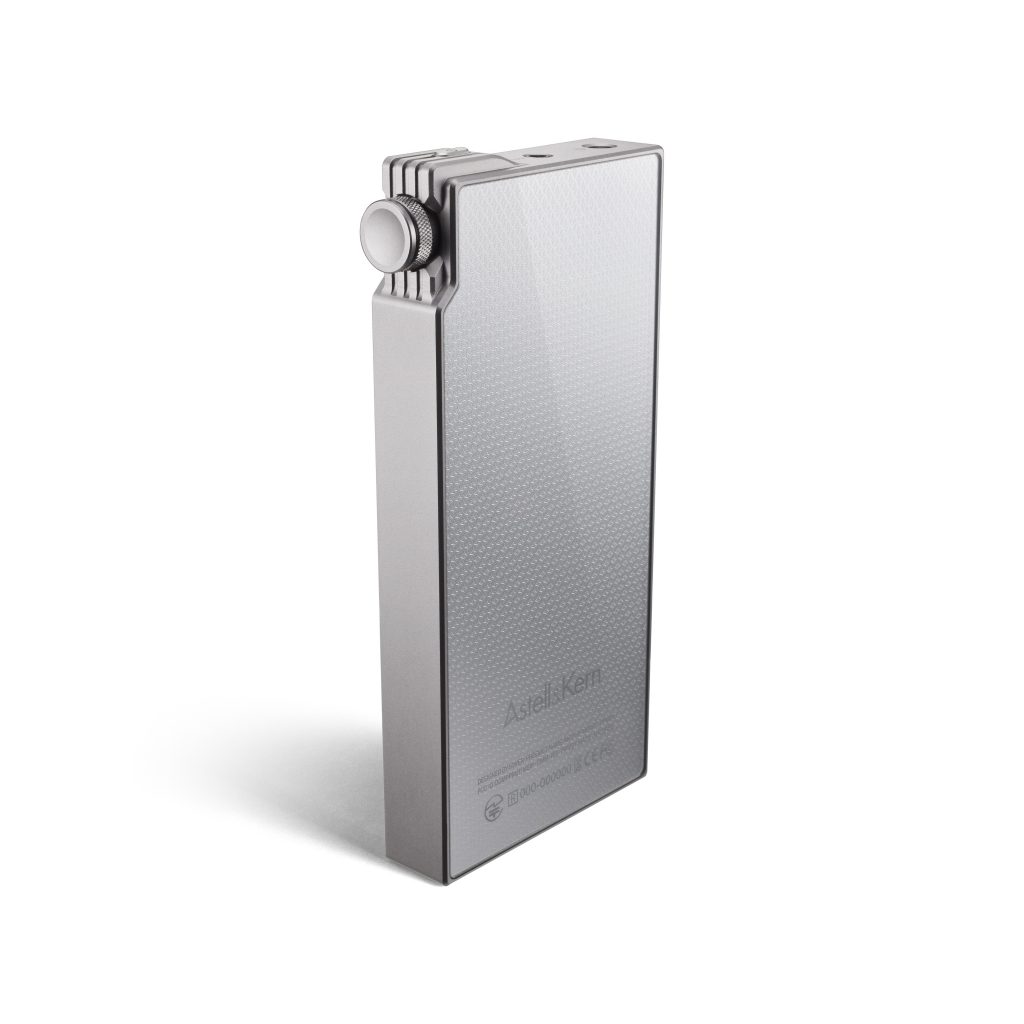
That said, and as I’ve mentioned in another article, I’ve been working in high-res needle-drops where I take the output of my best vinyl rig and digitize it via a Sound Devices 702 at 24/192k just so I’ll be able to make a chunk of my vinyl collection “portable” – it’s not precisely the same sound, even though the sampling rate is quite high, but it’s damn good anyway.
THE MENU IS NOT THE MEAL – Alan Watts
The AK120 II arrived. The packaging itself was astonishingly gorgeous. A&K really thought out the customer experience, down to the finest of details here. As I carefully unpacked the AK120 II I felt myself falling in love … from the silvery sleeve with the debossed Astell&Krn logotype and logo, to the extremely sturdy matte-black box with glossy “Astell&Kern” logotype, to the matryoshka-like nested levels inside the box – first revealing the player, crafted like a swiss-watch, then the internal box with the accessories and Italian-made faux-alligator-hide case (with serial number!). As I unpacked the contents, I felt all googly and wavy inside … it was an almost adolescent infatuation arising, and I had to remind myself (a few times) of Alan Watts’ wisdom: the menu is not the meal (aka: “the proof of the pudding is in the eating”). At $1,699.00 suggested retail, this player was going to have to do more than get my nether bits buzzing …

So I went about loading up music from my iMac’s music library. A&K provide a 3rd party software loader for Android devices, as the OS for the AK players is Android based. Funny enough, this proved to be a little bit hinky – the Android loader program isn’t so fond of my Mac-centric lifestyle, and there were several hiccups and odd results along the way. From the transfer stopping mid-stream, replete with messages about how the program was unable to copy such-and-such-file.aiff to the device, to copying doubles of some files, to splitting up albums into two files – some tracks on one album file, some on the other. Ultimately, I found that a “factory reset” on the player helped, as did a smaller migration from my iMac’s library to the DAP. The program is a 3rd party solution from Android.com – and therefore fairly common for those who need or want to transfer files from Macs to Android devices. The fault here lies with them and not with A&K, and I have still wrestled with some of these issues. I’ve been told by a few that PC users haven’t had these troubles. C’est la Mac.
[infobox maintitle=”NOTE” subtitle=”Astell&Kern provide their own USB cable and state frankly: Do not use a Micro-USB cable other than the one supplied with the device because doing so may cause a malfunction.” bg=”gray” color=”black” opacity=”off” space=”30″ link=”no link”]
With near 80GB of music in the offing, including CD res, downloads, and High Res material – plus the MQS streaming capabilities for those files I did not load onto player – I was loaded for bear and ready to get mobile. But before I get into the down and dirty, day-to-day digitalia of it all – let’s check out how it specs-out:
- The AK120 II is a highly capable player, able to serve and decode WAV, FLAC, WMA, MP3, OGG, APE(Normal, High, Fast), AAC, ALAC, AIFF, DFF, DSF, FLAC, WAV, ALAC, AIFF files at resolutions from 8kHz ~ 192kHz (8/16/24bits per Sample), as well as DSD : DSD64 (1bit 2.8MHz), Stereo / DSD128 (1bit 5.6MHz), Stereo. DSD is a DoP operation, which converts the bitstream data to PCM and then plays it back as a high-res PCM file at up to 176kHz.
- It can also stream via WiFi from your network, although it will not stream DSD (supported formats: WAV, FLAC, WMA, MP3, OGG, APE, AAC, DFF, DSF). This is accomplished, in part, by installing the MQS Server software on your host computer and allowing it to access your music file library.
- The onboard Dual Cirrus CS4398 chips allow them to create a fully-differential output for headphones that are balanced-capable. This is said to be a flagship product from Cirrus Logic, and has found its way into some fancy DACs out there in audiophile land.
- Interestingly, the DAP can also be used as a USB DAC when connected directly to your computer – allowing you to access all the files on your computer’s library, including the DSD files not available via the MQS streaming protocols. Use the headphone output to listen or use a set of cables to feed the headphone output in “Line Out” mode to your own Big Rig stereo (more on this capability later). Mac users need to download and install the MTP program from A&K’s website.
- It can also be used as a server to an outboard DAC via an optical digital output situated within the 1/8″ headphone output.
- Secondary outlet is TRRS and for balanced headphones.
- Battery life isn’t specified, but I’ve found through use that I get between 6 and 7 hours from a full charge … not ideal for long flights, but just about perfect for workdays. When traveling, I brought along my Mophie™ powerstationXL and was able to extend my playing time by recharging in the field (it’ll recharge the AK120 II from zero to full and still have some juice leftover)
- On-board 10-band graphic EQ
- Bluetooth (should you feel the need to pair it with your favorite Bluetooth application)
- Firmware is upgradable OTA (Over The Air – aka, via WiFi)
- Gapless Playback: I had a little trouble with this function and came to find out from A&K’s Jimmy Moon that it apparently only works with FLAC files. This was a little bit disappointing to me
- Balance Control: this could be quite useful for those who don’t have the same sensitivity in each ear (yes, that’s a thing – and more common than you’d think)
- xD Card for up to 128GB expansion in addition to the onboard 128GB of solid state memory.
The list of features is even longer, including aspects of the very nice GUI (Graphic User Interface) and touch-screen, the ability to create playlists on the fly, and the ability to look at your files as sorted by artist, album, songs, genres, playlists, or just dive into the folders (and subfolders, should you have decided to get all OCD about your music organization … like me).
Expectations were high given this menu of specifications – suited, as it seemed, for high-steppers and libertine music lovers everywhere. My month with the AK120 II allowed me specific insight into how well the walk satisfied the talk.
ASSOCIATED GEAR
I used the AK120 II primarily as a portable player, but also as a self-contained digital source for my main stereo system using the Line Out function of the player and a set of stereo cables that terminate from 1/8″ stereo TRS to a pair of RCAs at the other end (custom made). The latter circumstance aside, I had the following headphones and IEMs at my disposal during the evaluation period:
- Audeze LCD-3 (non-Fazored)
- Audeze LCD-XC
- Master & Dynamic MH40
- Noble K10 Universal
- Klipsch X10
- Custom/Prototype multi-driver IEM from a friend in Russia (details about which I’m not at liberty to reveal)
To get this out of the way up front, the AK120 II didn’t have enough gronk to drive the Audeze LCD-3s to my pleasure point, which is to be expected from a portable DAP – even one with Ferrari-like build and specs. But it did pretty well with the LCD-XC to my surprise, especially if the music wasn’t too demanding in the subterranean department. The M&D MH40 was a much kinder load, and since it is also a much kinder load on top of my head – being significantly lighter than the Audeze cans – I spent most of my “over ear” time listening to that set, a review for which will be forthcoming. The Lion’s Share of my IEM listening was via the Noble K10 Universals (review HERE), the balance split evenly between the Klipsch X10 (discontinued), and a custom multi-receiver IEM that “Misha” has been working on for – oh – 10 years or so.
My main stereo system is comprised of the following :
- Oswald’s Mill Audio “Mini” loudspeakers
- Klimo “Tine” monoblocs
- Klimo “Merlino Gold Plus” preamplifier
- Klimo “Beorde Plus” record player
- Soundsmith “Boheme” cartridge
- Soundsmith “MMP-3” phonopre
- Continuum “Caliburn” record player
- Soundsmith “Hyperion” cartridge
- Soundsmith “MMC-2” phonopre
This is a highly resolving system that has delighted me to no end, and when I get the time to play with it I’m in musical heaven. However, those days have been few and far between thanks to my workload being higher than usual and my ability to stay up late waning as I stumble toward 50 years old. (Ugh. Did I really just admit that? Insert Frownie Face HERE …)
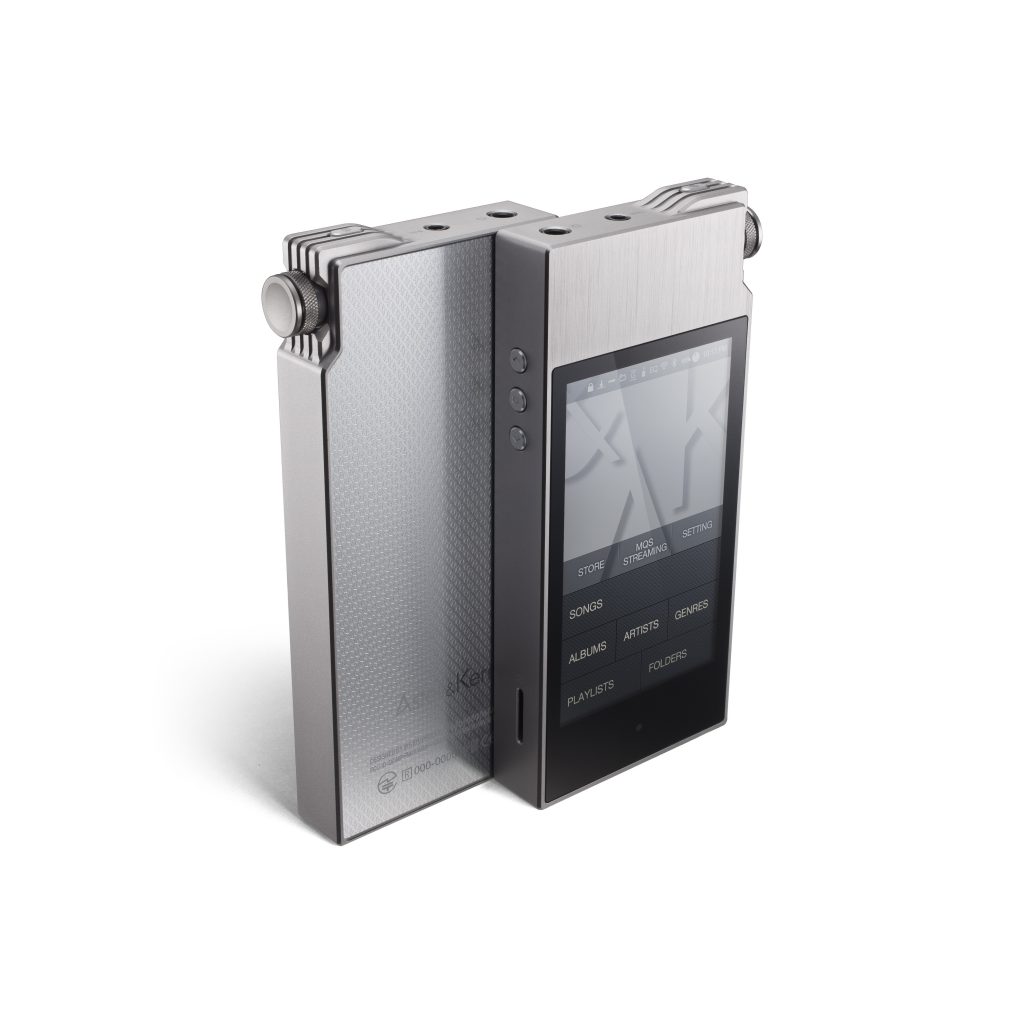
DAILY DRIVER
I’ve chiefly used the AK120II as a “daily driver” – feeding me tunes as I go about my day, and in this role it’s a hardy companion. The user interface is well thought out, such that I can pull down a superimposed menu from the top of the screen and engage or disengage various function such as Gapless playback, WiFi connection, Bluetooth, EQ, etc. When I’m in “Daily Driver” mode I like to get into the Songs list (vs. Album, Artist, or Playlist) and then use this pulldown menu to engage the Randomizer. In this way it’s sort of like listening to radio, except this radio station has a very wide variety of genres to pull from. It’s fun to hear Tom Waits for one tune, Kate Bush the next, Nosaj Thing the next, Count Basie, Echo and the Bunnymen, Joe Pass, Baby Dee, The Bad Plus, Robert Rich, Jay Bennett, et cetera. It is much nicer listening to full-resolution and high-resolution tracks than listening to compressed streaming, which is my usual routine.
When I need to take a break from the workbench or the desktop, the AK120 II shows me the money. I’ll pull up an album or a playlist, kick back, close my eyes, and luxuriate in the music. If I’ve been working in the shop, I’ve likely got IEMs in as I sometimes have to isolate my ears from the noise of the machines. If I’m at my desktop, I’ve likely got cans on – and these days it’s been the Master&Dynamic MH40, because the AK can drive them pretty well. These breaks from my work where I take a short vacation into my music, they’re a precious respite. I’m not able to repair to the listening room, warm up the system, and then play a few sides – that would make me very unproductive. In the past I’ve kicked back with the iPhone feeding Spotify or Pandora into my noggin, and it doesn’t suck for what it is. But once I replaced that with the AK 120 II, the difference was wondrous … and I fell more deeply into the music, and my break from work was even more refreshing.
One of my favorite albums for a work-break is Robert Rich’s “Echo of Small Things” – which I’ve written about before. I love the combination of found sounds, spaciousness, reserved composition, and “surrogate world” rendering that he is a master of. Kicking back and listening to the full-resolution version from the AK120 II was a whole new experience than I was accustomed to, especially when I had the Noble K10 Universals here. To say that the experience was immersive dulls the concept for words. In ordinary circumstances, even through my desktop system or my laptop system, this album is relaxing enough to put me in a dream-like state. With the AK, something more was in the offing, as a gentle and familiar euphoria blossomed … the kind of euphoria that I experience, albeit in larger doses, when play records in the Big Rig. Something special was going on here, and I was beginning to understand what the fuss about these players is.
High resolution albums can be mind-boggling on this player, as well. This is a special treat for me. Usually, as a matter of circumstance, I can only listen to my High Res stuff on my desktop or laptop systems. The AK has spoiled me now, making this part of my library portable and allowing me the chance to swim in the music I’ve collected from various high resolution sources. Lately I’ve been listening to some really tasty jazz from Chesky Records, and I’ve got these in heavy rotation these days:
- Hot Club of 52nd Street
- Jazz in the Key of Blue
- Live From Studio A
- Swing Live
- Three For All
- Tropicana Nights
- Yerba Buena Bounce
Some of these are also recorded with a binaural microphone, lending them a more spacious and immersive characteristic – though, I must admit, I do not get the sense of “virtual reality” that these kinds of recordings are supposed to impart. The best I’ve ever heard in this regard were the recordings done by Hugo Zuccarelli with his Ringo system, which was a variant of binaural recording that apparently modeled the proxy-eardrum/microphone as an interferometer. Nevertheless, these recordings are stellar and contain some of my favorite music. If you’re a jazz fan, these aren’t to be missed.
I’m also a big fan of Todd Garfinkle and the recordings he does for his own label, MA Recordings. Todd and I became friends back in 1994’ish when I found him at one of the audio shows and just fell in love with the music he was purveying. His recording technique is simple, pure, and legendary: two exceedingly good omni mics are mounted on a stand as the musicians are organized in a rich acoustic space. Then the musicians just play. I’ve got a pretty good collection of the stuff he has recorded over the years, but in my High Res catalog I’ve had these titles in heavy rotation:
- La Segunda
- J.S. Bach Suites a Violon Cello Solo (Vols 1&2)
- Krushevo
- Nama
- Opening
- Out of Time and Country
- Wolfgang Amadeus Mozart : Works From His Golden Age
The AK120 II delivered the musical goods with the kind of effortlessness that makes for very addictive listening, which means that it can get pretty distracting if I’m in Daily Driver mode. I’ve found myself sitting there, soldering iron in hand, bobbing my head along with the music and not soldering anything. And while that may be some kind of glowing endorsement for the player, it doesn’t make me any more productive. And here you’ve got the AK’s reason for being, as far as I’m concerned: it is, ultimately, a highly-capable high resolution digital player that just happens to be compacted into a small, beautifully-made portable object that you can take with you wherever you go. If High Resolution Digital is your thing, then the AK120 II is as high-performance a player as I’ve had the deep, immersive, distracting pleasure of listening to.
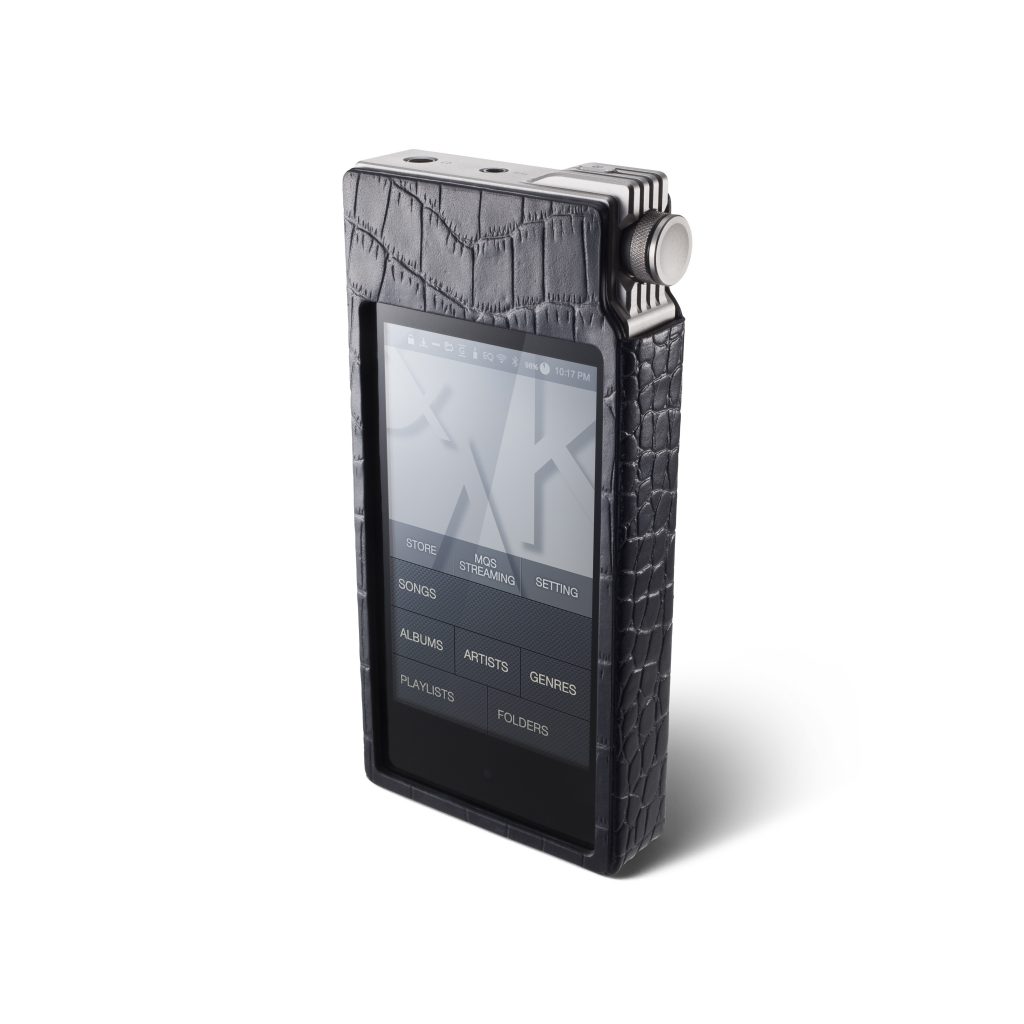
A NOTE ABOUT DSD
DSD-wise, I’m not all that engaged, mostly because there just isn’t that much music that I care about that has also been recorded natively to DSD, and the stuff that I happen to like tends to be very expensive. I don’t understand why, given that these are downloads … there’s no actual, physical product to produce, to ship, to give dealers margin for. Downloading generally seems overswollen with profit to begin with, and so I find it all the more difficult to part with $50 for a download of DSD music that I’d otherwise really like to listen to (Blue Coast Records, I’m calling you out). That said, I’ve got a few titles from Foné and Channel Classics via NativeDSD.com that I’m enjoying. At the end of the day, DSD is not a deal breaker for me given that there’s very little published in native DSD that I want to listen to, and of the things that I would like to listen to – I’ve not pulled the trigger due entirely to price.
That aside, I did want to evaluate the player’s DoP style DSD playback, and so I loaded the few albums of DSD material that I do have onto the AK and gave it a spin. Let me preface this by saying that I’ve not been all that impressed by DoP in any instance that I’ve heard it, preferring by far native decoding. There’s an essence or vitality that seems to be sacrificed or sullied a little in the conversion, and I find this to be true whether or not this a device was decoding on the fly or if I was using a program like Korg’s Audiogate to convert from DSD to PCM. The AK’s DoP conversion on the fly wasn’t perfect, but it did retain some of that vitality that I think is usually lost in the conversion process – playback seemed at least as good as the high-res PCM files I was listening to, maybe even better, but it was hard to determine because I didn’t have PCM versions of the DSD tracks I was listening to so I had no practical way to compare.
One thing I note about native DSD recordings is that they convey a spectacular radiance of harmonic information, much more it seems than any PCM recording of any resolution that I have on hand. Here the AK surprised me, as a goodly portion of that radiance wasn’t lost in the DoP conversion. It makes me wish there were more pure DSD recordings of music that I want to listen to, and it makes me frustrated to think of how expensive this DSD habit could possibly be if there were more recordings like that. It reminds me of those Direct to Disc recordings that Doug Sax used to make for his Sheffield Labs label – a few LPs of which I still have around. Gobsmackingly good recordings of music that I just wasn’t into.
This situation represents an opportunity for the intrepid entrepreneur to get good music recorded to DSD and get it out to fans at reasonable prices. I think of some of my favorite indie labels that could benefit by this. Just imagine if Matador, or Sub Pop, or Asthmatic Kitty, 4AD, Jagjaguar, Glassnote, Fat Possum, or even Daytrotter just started recording in pure DSD. Sure, they’d have to convert to DXD and mix in extreme-res PCM for the more complicated records … but if we got DSD from labels like those, me and a whole lot of people like me would be on board – and DSD would suddenly be viable outside of the narrow niche of audiophilia.
VoP (Vinyl over PCM)
OK, I made that up – but I’m using the notion to compartmentalize my high-res needle-drop project. I’m slowly getting to the work of making high resolution digital recordings of my favorite records using my Continuum Caliburn as a source and a Sound Devices 702 recorder for the 24/192k recordings. It will take some work, of course, but at the end of the project I hope to have a major portion of my LP catalog “portable-ized” so that I can enjoy as much of that delicious LP goodness in a handy travel-size. I decided to load up some of the files I’ve already made to the AK120 II in order to test my theory. The AK has more than enough room on board for these, so I haven’t yet been face with the need to buy an xD card to expand its capacity.
As a longtime jazz fan I’ve subscribed to various of the reissue series that have been offered over the years, including just about everything Analog Productions has done, and utterly everything that Music Matters Jazz has done. Lately, I’ve been transferring titles from the Music Matters Jazz Blue Note 33rpm collection. I don’t have enough superlatives to throw at this series, it is that good. If you’re a jazz fan at all, this series delivers an impeccably musical experience from lead-in to dead wax, every time (so far). I’ve gotten only a handful of records transferred so far, and I’m hoping to get enough free time in upcoming winter weekends to get caught up on the MMJ 33’s, but what I’ve got so far sounds truly wonderful when I play it back on the recorder.
Will the AK120 II recreate the experience of listening to vinyl closely enough to fulfill my little pet dream?
Stay tuned for Part 2!














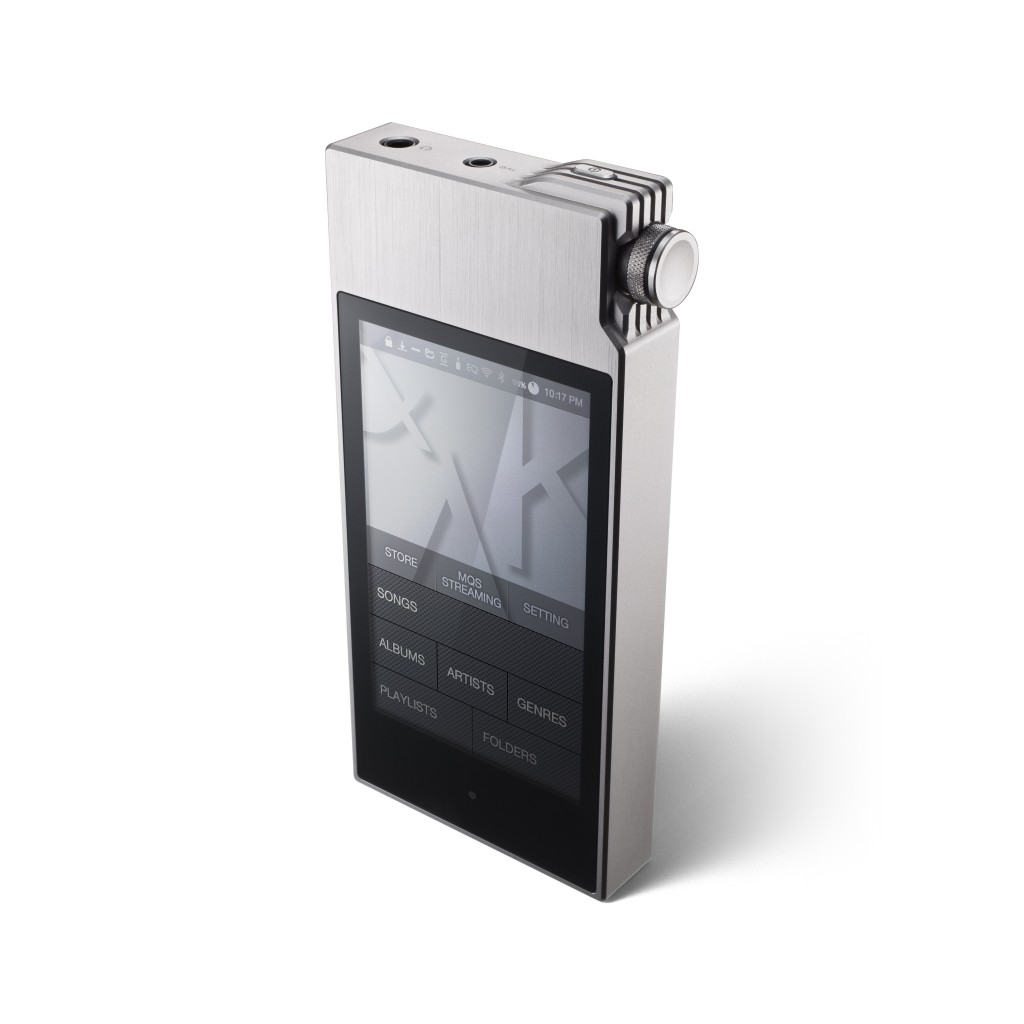
Reply
Reply
Reply
Want to join discussion?
Feel free to contribute!